The increase in this volume is called polyuria, and a reduction is divided into oliguria (when urine output from 50 to 500 ml) and anuria (less than 50 ml). Often the last two things are so associated and transient, that they are called by one term “oliguria-anuria”.
Daily urine quantitatively has its own norms. Deviations indicate pathological changes if they are held firmly and are not associated with physiological factors. For an adult with normal drinking regime is typically the removal on average of 1.5 liters of urine.
To determine whether cessation of urine output is the definition of residual volume by means of installation of the catheter in the bladder or ultrasonic method (revealed not more than 30 ml).
Symptoms of anuria has to be distinguished from other condition is acute urinary retention (ischuria), when:
- the bladder is full and tense;
- it can be palpated above the fold;
- the patient suffers from pains and constant desire to urinate.
To address the question what is this disease and why it occurs, we need to understand the many reasons for oligo-anuria.
Anuria refers to ICD-10?
International classification adopted throughout the world, does not consider anuria separate disease. She attributed it to the sign indicating the deviation from the norm, which is confirmed by clinical symptoms and laboratory methods.
Code R34 is included in the combined unit, among the symptoms of pathology of the urinary system. Separately considered the cases of anuria in women, complicating abortion, pregnancy or arising in the postpartum period.
What is the cause of anuria?
Causes of anuria lie in the kidney with a violation of the filtration function or associated with extrarenal factors. Distinguish the types of anuria depending on the relationship to the kidneys.
Prerenal anuria (extrarenal)
Anuria develops in the intact kidney due to disturbed blood flow in the glomerular apparatus of the nephron, the total water and electrolyte changes.
This mechanism is characteristic of:
- shock from blood loss or other reasons;
- arterial hypotension;
- thrombosis or mechanical compression of renal vessels;
- serious condition of dehydration (fluid loss from vomiting, diarrhea, profuse sweating);
- heart failure of different etiology in the ascending edema;
- liver damage in alcoholic cirrhosis;
- neuroendocrine disorders.
Renal anuria
Renal anuria is observed in pathological changes in the kidney tissue.
It is possible:
- in case of poisoning by nephrotoxic poisons and drugs (ethylene glycol, chlorinated hydrocarbons, salts of heavy metals, aminoglycoside antibiotics and tetracycline);
- blockage of renal tubules by crystals of the drugs derivatives of sulfonamides, uric acid;
- kanalzeva necrosis caused by ischemia of the renal parenchyma;
- acute and chronic nephritis, complicated by renal failure;
- urolithiasis;
- the polycystic kidney disease;
- bilateral nephrosclerosis;
- systemic vasculitis.
Dysfunction of filtering is called secretory anuria.

Renal anuria complicates the severity:
- sepsis;
- burn disease;
- injuries and surgical operations;
- transfusion of incompatible group or rhesus blood.
Application of methods of radionuclide diagnostics is also accompanied by radiation effects on the kidneys
Application in the treatment of various diseases methods of radiation exposure has caused necessity of studying of negative influence of radiation exposure on the kidneys. The term “radiation nephritis”. It is characterized by the development of symptoms of acute renal failure with anuria.
If the signs found in the period from 3 months to years after irradiation, then the radiation is considered to be acute nephritis. The manifestation of the clinic after one and a half years talking about the chronic form. In the study of disease the great contribution made by scholar S. Kapoor. His work with co-authors proved the role of reaction of the tubules and blood vessels of the glomeruli in radiation. Biopsy detect thrombosis of capillaries.
Postrenal anuria
The reasons are connected with the structures of the urinary tract, lying below the kidney and is responsible for the normal outflow of urine, or adjacent organs.
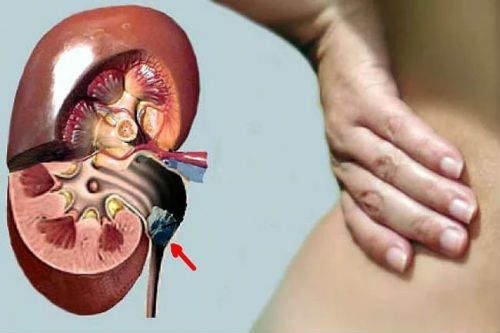
Possible:
- the compression of the ureters or urinary bladder tumor urinary bladder, retroperitoneal space, large prostatic hyperplasia in men with inflammatory infiltrate;
- overlap the vents clots of blood with gross hematuria (trauma, collapsing the tumor);
- stuck in the lumen of the ureter or of the cervical portion of the bladder stone.
Anuria called excretory if it is provoked by mechanical obstruction of urine outflow
Some scholars have identified arealow the form of anuria, in which the kidneys are absolutely not involved in cessation of urinary output.
This includes the status:
- in congenital absence of kidney;
- the forced removal of the organ (nephrectomy);
- the imperforate outputting the opening of the urethra;
- spasm of the internal sphincter of the bladder neck;
- reflex blocking effect of the brain on the regulation of urine secretion (occurs when of severe pain during an attack of renal colic, the immersion of a person in cold water).
It seems to us that it’s adding to confusion in the classification of reasons. State it is explained by classical mechanisms.
Symptoms
Depending on the reasons for the development of anuria passes gradually through a latent stage, then oliguria (e.g. chronic nephritis) or has turbulent flow and progresses rapidly (in a state of shock, sepsis).
Anuria is a symptom kidney failure, so it develops in accordance with the phase of dysfunction of kidney and compensatory capabilities of the other body. Any of the above reasons in the end disrupts the filtration urine reabsorption is important for the body’s biological active substances.
How long a person does not feel disease symptoms is dependent on each individual, age, lesion of one or both kidneys. Loss of balance in the production and allocation of waste slag increases the clinic’s endogenous poisoning of the body.
With the gradual course of the symptoms add up:
- of loss of appetite;
- the emergence of a sense of thirst;
- nausea;
- vomiting;
- constipation or diarrhea;
- dry mouth.
It is important that when anuria no urge to urinate, if it is not linked to the inflammatory process in the bladder.

The further course of the process is supplemented by the symptoms of the nervous system:
- headache, and muscle pain;
- a change of state of arousal and sleepiness;
- nonsense.
The nephrotic syndrome is manifested:
- persistent high blood pressure crisis;
- increasing swelling on the face, feet, hands.
The use of inhalations of oxygen to compensate for its deficiency in tissues
Decompensation of heart failure adds to the clinical picture:
- shortness of breath;
- pain in region of heart;
- tachycardia and arrhythmia;
- enhances peripheral edema.
Diagnosis
If the patient has chronic kidney disease, then the diagnostic task is to identify the activity of the process, the degree of damage to the renal apparatus. This has implications for prescribing, the choice of treatment.
In the absence of data about previous diseases of the patient have to completely examine. Cases of treatment in the stage of anuria represent a difficult task for the doctor. Not all diagnostic methods can be applied. Need urgent hospitalization in urology or Nephrology.
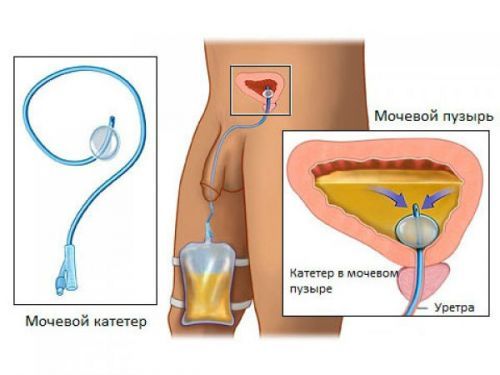
To clarify diagnosis are:
- urine tests are based on small quantity, extracted the catheter from the bladder with a mandatory sediment microscopy, the sample Nechiporenko, buck. sowing;
- biochemical studies of blood plasma to the creatinine, residual nitrogen, protein fractions, electrolytes, alkaline phosphatase;
- indicators of the blood coagulation system;
- cystoscopy with a visual overview of the mucous membrane of the bladder, the orifices of the ureters, the urethra;
- Ultrasound of the kidneys and the abdominal cavity;
- contrasting types of diagnostics of the kidneys, urinary tract, blood vessels;
- opportunities – CT and MRI, kidney biopsy.
Bladder catheterization allows to exclude acute urinary retention, to withdraw the accumulated fluid and to relieve the symptoms of the disease
The next step for a patient will determine the cause of acute and delayed the decision on conservative or operative treatment. This is important because frequent attacks of ischuria lead to inflammation, block the withdrawal of urine from the upper tracks and can be a risk factor true anuria.
When anuria occurs in women during pregnancy and abortion?
Pregnancy is accompanied by an additional strain on the kidneys. It is explained by the need to process and excrete not only the waste substances of the mother, but also the waste products of the fetus coming through the placenta.
But the hormone progesterone reduces the tonus of the bladder. It is in the third trimester leads to the danger of infection and the spread of inflammation to the kidney tissue. In addition, increased pressure from the uterus, then, the conditions for stagnation of urine. In this way the woman may experience pyelonephritis with hypertension.

If treatment is not spend in a timely manner, formation of renal and extrarenal causes for the occurrence of anuria.
Unfortunately, making decision about abortion, a woman does not take into account the risk of complications. We will not discuss the willingness or reluctance to have children, stop only when the consequences of abortion with anuria.
Any abortion is accompanied by the risk of inflammation of the genitals spread to the whole body (sepsis), peritonitis. Obstetrician-gynecologists provide statistical data for the development of endometritis in 5% of women, purulent inflammation of the appendages – 3%. The most traumatic is considered to be a surgical abortion, the least – vacuum aspiration and medication abortion.
Sepsis and internal bleeding, reinforcing the negative effects on the kidneys. At the same time decreases blood flow, narrowed blood vessels in the glomeruli and appears inflammatory swelling of the tissues. In the blood, which means the kidneys do infectious agents.
In the context of a weakening of the body, they can quickly cause acute nephritis with kidney insufficiency. The gradual removal of cellulose progresses in the background of the deterioration of the General condition of the patient. Complete anuria indicates kidney failure. Even in the case of successful treatment of women remains a high residual risk of infection and chronicity of the lesions, it is unknown how to behave afterwards.
During pregnancy in women with kidney disease may develop hydronephrosis, its pathogenesis is depicted in the picture
Treatment
About first aid in case of anuria could not be considered. The best that can done close man is to know how long did not urinate on patient and quickly deliver the patient to the urology Department or call an Ambulance. Without medical training to detect such a complex symptom impossible.
In identifying renal form of anuria, and the lack of need for observation and surgical intervention of the patient can be transferred to therapy or a specialized Nephrology unit. Treatment of anuria caused depends on the cause.
In a state of shock – carried out all the necessary antishock measures:
- transfusion Reopoliglyukina, if necessary, plasma and Packed red blood cells;
- corticosteroids are used in high dose;
- introduction symptomatic stimulating means;
- maintaining acid-alkaline balance.
Poisoning nephrotoxic poisons requires:
- gastric lavage;
- detoxification;
- the introduction of alkaline solutions;
- according to the testimony of hemodialysis.
Acute renal failure with anuria well treated by hemodialysis procedures.
Treatment of chronic renal failure is depending on the concentration of creatinine in the blood and glomerular filtration rate:
- assigned to the protein-free diet;
- intravenous administration of Mannitol to restore the filter;
- anabolic steroids help to reduce the concentration of nitrogenous wastes;
- the alkalinity of the blood is achieved by the introduction of sodium bicarbonate;
- cautiously prescribe antibiotics to prevent infection.
In the absence of results from conservative methods of treatment using haemodialysis. In cases of anuria extrarenal origin the main method is the main treatment of chronic disease. Postrenal anuria usually requires surgical intervention.
In some cases, you may need surgery
It is important that in the absence of necessary treatment of the disease that caused anuria, the patient has symptoms of complications such as:
- the growing signs of circulatory failure;
- arrhythmias caused by disturbed composition of the blood electrolytes;
- resistant hypertension;
- pericarditis;
- neurological disorders (drowsiness, paralysis, convulsions);
- obstruction of the intestine.
Anuria cannot be treated with folk remedies. The rejection of professional assistance will lead to the patient’s death from uremic coma. With the aim of preventing anuria and other urinary disorders must adhere to a healthy diet, limiting spicy and salty foods, test the urine sample. Any symptoms pointing to a little urine, should immediately bring the patient to the doctor.

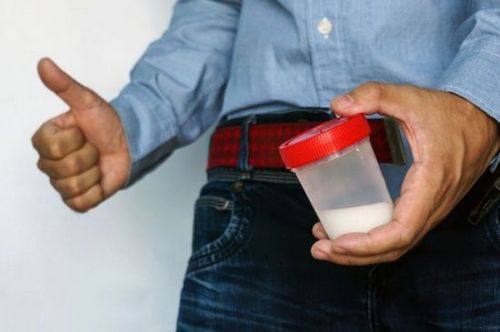
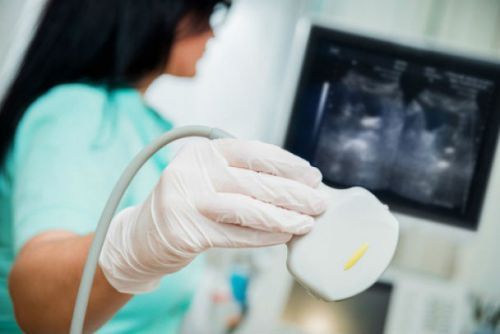
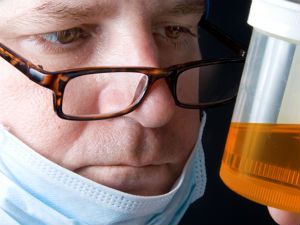
I was just searching for this info for some time. After 6 hours of continuous Googleing, at last I got it in your web site. I wonder what is the lack of Google strategy that don’t rank this type of informative websites in top of the list. Normally the top sites are full of garbage.
Hi there I delight in, result in I discovered just what I used to be having a look for. You’ve ended my 4 day long hunt! God Bless you man. Have a nice day. many thanks
That’s pretty well informed. Would it be ok to pose a follow-up question?
This is very well detailed and practical, kudos. I enjoy the way you cover points without waffling on. It’s great insight and I find you worth following.
I think I know what you’re saying, but I have questions. Is it ok if we talk via email?
Awe, I am sorry he had to go through all the pain, but I’m so glad he is feeling much better!
You made some first rate factors there. I seemed on the internet for the difficulty and located most people will go along with together with your website.